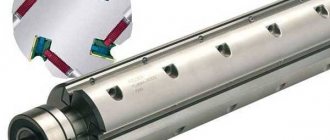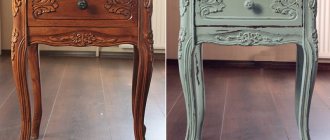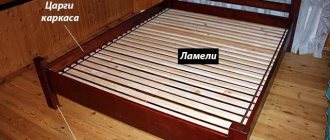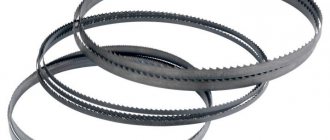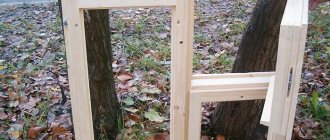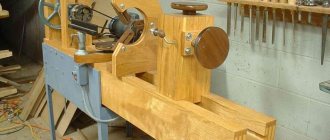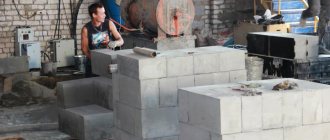One unpleasant feature when working with wood is the presence of a large amount of shavings, sawdust and finer wood dust. Accumulating in the workplace, they create unbearable working conditions. In addition to the fact that they interfere with technological operations, they are dangerous to health. To solve this problem, many complex and expensive machines are equipped with industrial vacuum cleaners. The presence of such an option significantly increases the price of the entire unit. However, this problem can be solved in a budgetary way. To do this, you need to assemble the chip pump yourself. Such a system does not require complex equipment, and can solve the problem of chip collection quite effectively.
Principle of operation
You can do a cyclone-type chip ejector with your own hands only after determining the basic principles of operation. The features include the following points:
- A corrugated hose of small cross-section is connected to the main body, which concentrates and enhances traction. The tip may have different attachments, it all depends on the specific task at hand.
- At the top of the structure there is a motor, which is directly connected to the impeller. During rotation, the air is discharged, thereby creating the required thrust.
- During suction, the chips settle in a special container, and the air is discharged through a special pipe on which a coarse filter is installed.
- A fine filter is also installed at the outlet pipe, which traps small particles and dust.
Operating principle of a cyclone
In general, we can say that the operating principle of cyclone-type chip ejectors is quite simple, due to which the design is characterized by reliability.
The need for aspiration systems for the woodworking industry
To create comfortable working conditions, prevent dust emissions from special equipment in the production workshop, and move bulk materials, aspiration systems and pneumatic transport are used. They are intended not only for sanitary and technological purposes, but also provide fire safety.
The quality of work largely depends on the reliability of dust removal ventilation. A properly designed ventilation system helps:
- significantly reduce heating costs;
- free the room from dust particles;
- produce high quality products.
Wood processing involves the generation of different types of waste. Based on the type of wood processing, waste is divided into sanding dust, shavings, and sawdust.
Since filtration of large fractions is not a difficult task, the main function of modern aspiration systems is the effective disposal of fine dust.
There are ventilation devices that allow you to get rid of one type of pollution. But in large enterprises with an expanded range of products, the percentage of production waste always changes. In this case, aspiration systems are required that involve an integrated approach to the elimination of production waste.
Types of chip ejectors
Almost all models of cyclone chip ejectors are similar. In this case, the main mechanisms, for example, the engine or the cyclone system, may differ slightly, which determines the main classification. All cyclone type chip extractors can be divided into several categories:
- For household use.
- Universal.
- For professional use.
When choosing a model for a home workshop, you should pay attention to the first two groups of equipment. This recommendation is due to the fact that their cost should be relatively low, while the performance will be sufficient.
Professional chip suction
If you frequently carry out work in the workshop, there is a large amount of shavings, and if you are providing professional cleaning services for workshops and other premises, you should consider when choosing cyclone-type chip ejectors from the professional group. This is due to the fact that it is characterized by higher performance and reliability, and can withstand long-term use.
Chips are not dust
It is distinguished by a number of features, primarily its origin and size. In general, talking in detail about shavings is a thankless task, since even small children know what it is. Including those who have no idea about woodworking machines and may not be familiar with the Russian noun “shavings”, but have learned the taste of chips. In English, shavings are ─ chip (sounds like “chip”), although other nouns can be used to refer to them.
The current regulatory document ─ “GOST 18110-72 Chipboards. Technology. Terms and Definitions" wood chips are defined as "wood particles of various shapes and sizes." The shavings can be specially manufactured for subsequent use or be waste from wood processing on woodworking machines. “Various shapes” ─ means that there are flat, twisted, and needle-shaped chips. How important are these nuances for a chip suction machine? Needle shavings can pierce the filter fabric, thereby destroying it.
By the way, sawdust, according to the same document, is wood particles “obtained as waste from sawing wood.” Wood particles smaller than one millimeter are considered wood dust.
The size of the chips and their origin are clearly stated in GOST R 54235-2010 (CEN/TS 15357:2006). Solid fuel from household waste. Terms and definitions" ─ "particles several (up to 10) centimeters in size, formed under the action of a cutting tool."
The shavings can be not only wooden, but also metal or plastic. In "GOST 18978-73. Scrap and waste of non-ferrous metals and alloys. Terms and definitions “non-ferrous metal shavings (how do ferrous metals in this context differ from non-ferrous metals?) is defined as waste generated during the processing of metal products on metalworking machines.
Cyclone type chip suction device
Most models resemble a regular vacuum cleaner, which, due to its strong traction, sucks up large and small chips. However, even a powerful and high-quality vacuum cleaner cannot be used to clean the workshop. The main structural elements can be called:
- A flange-type electric motor is installed, the power of which is only 3.5 kW.
- To discharge the air, a fan with a durable and mechanically resistant impeller is installed. It must be large enough to produce the required thrust.
- The cyclone is designed to purify the air that will be exhausted outside. Its device is designed to filter large elements.
- A multi-stage filter significantly increases the efficiency of the procedure. This is due to the fact that at the primary stage, large elements are separated, after which small ones are separated. Through multi-stage cleaning, you can significantly extend the life of the filter and increase its efficiency.
- The lower cyclone is intended for direct collection of chips.
- A collection bag made of durable material is designed to temporarily store chips and other debris that have been separated from the passing air flow.
High-quality models have a sealed body, which is lined with sound-absorbing panels. To control a cyclone-type chip extractor, an electrical or mechanical unit is placed; there must be a special hole for connecting a corrugated hose with a nozzle.
It is not difficult to make a cyclone-type chip extractor with your own hands, since it is in many ways reminiscent of a conventional vacuum cleaner with a large number of filter elements and high power. The woodworking cyclone device is characterized by high reliability; if the operating instructions are followed, the device will last a long time.
What solutions are optimal?
Local suction, hoses or outlets of the aspiration system must ensure complete removal of small particles, dust and waste. At the same time, they are allowed to be connected to general exchange lines, but only if there is no fine dust, particles of paint and varnish materials and adhesives that need to be filtered.
Floor or underfloor suction units are installed to remove dust and particles from the floor . Filtration of the exhaust stream is carried out using special dust settling chambers or, for larger wastes, cyclones.
The supply of the supply flow should not occur in a concentrated order. This can increase the speed of air movement inside the room, creating turbulent funnels that raise dust. It is highly volatile and harmful to human health, so compliance with sanitary requirements is very important. It is necessary to ensure a dispersed supply of fresh air , to prevent the formation of high-speed flows.
To organize air exchange in large or medium-sized workshops, ceiling fans (or shower air supply) are recommended to help retain dust and small particles at floor level and prevent its spread to adjacent rooms.
The use of natural ventilation is carried out in the absence of contraindications and the possibility of eliminating heat loss. It is necessary to ensure that there are no drafts that spread dust and debris throughout the workshop.
Design features
In most cases, when making a cyclone chip pump yourself, a low- and medium-capacity motor is installed, which can be powered from a standard 220V network.
More powerful units are equipped with three-phase motors, which can cause quite a lot of difficulties in powering them in domestic conditions.
Among the design features, it should be noted that the impeller is installed to ensure spiral turbulence of the air flow. In this case, heavy particles are dumped into a special container, after which centrifugal force again lifts the air to remove it.
Preparatory work
When making a structure with your own hands, you can save a lot, but some mechanisms still cannot be assembled yourself. An example would be the most suitable motor and impeller. The preparatory stage includes the following actions:
- Formation of an action plan for assembling homemade equipment.
- Searching for a suitable electric motor, checking its condition.
- Selection of other mechanisms that cannot be made by hand.
Chip suction drawing
In a carpentry workshop, much of what is required to create cyclone-type chip ejectors can be made with your own hands.
Tools
Depending on the chosen scheme, a variety of tools may be required. The easiest way is to make the outer casing from wood. It is to this that other elements will be connected. The recommended set of tools is as follows:
- Indicator and multimeter.
- Chisel and other tools for working with wood.
- Screwdriver and various screwdrivers, hammer.
The simplicity of the design determines that it can be manufactured with the most common tools.
Materials and fasteners
The device being created must be light and airtight, and also withstand the pressure exerted by air swirling. To make it you will need:
- The body can be assembled from plywood, the thickness of which is about 4 mm. Due to this, the structure will be durable and lightweight.
- To make other parts, you will also need pieces of wood of various thicknesses.
- Polycarbonate.
- The filter can be taken from a VAZ injection type. Such a filter is cheap and will last quite a long time.
- The engine can be removed from an old powerful vacuum cleaner, the impeller will be mounted on the output shaft.
- To connect the main elements you will need screws, self-tapping screws, bolts with nuts, and sealant.
Plastic housing for cyclone
After finding everything you need, you can start doing the work.
Making a cyclone filter
As previously noted, making a filter is quite difficult; it is best to purchase a cheap, ready-made version. However, it will also require a sealed seat.
The seat is also made of wood. In this case, the main thing is to correctly choose the appropriate diameter of the outlet hole, since too small will lead to a decrease in throughput. There is no need to attach the filter, just create a block for it that will fit perfectly in size.
Creating a retaining ring and a shaped insert
To fix the polycarbonate during the manufacture of the case, wooden rings are required. They must have an internal diameter that provides the required volume of the storage tank. Between the two fixing rings there will be vertical strips holding the polycarbonate sheets.
You can make such rings in a home workshop if you have the appropriate skills and equipment. At the same time, do not forget that they must have high strength.
Installing the Retaining Ring
Assembling the case can begin by placing the locking wheels and polycarbonate sheets. Among the features of this stage the following points can be noted:
- The sheets are fixed on both sides with strips.
- The connection is made using self-tapping screws.
- To improve sealing, slots are created in the lower and upper rings for sheets, after installation of which the seams are sealed with sealant.
Homemade cyclone for vacuum cleaner
After assembling the housing, you can begin installing other structural elements.
Installing the side pipe
In order to eliminate the possibility of rupture of the structure due to clogging of the filter element, a side pipe with a safety valve is installed. To do this, a hole is created in the polycarbonate sheet, which is closed on both sides by the body of the safety pipe.
A rubber gasket should be placed between the wooden planks and the wall; the degree of sealing can be increased by using sealant. The element is secured to the body using bolts and nuts.
Top entry installation
Suction of chips and air occurs from the top of the structure. To accommodate the upper input, a small housing is created in which the pipe from the old vacuum cleaner is placed.
When using a special pipe, reliable fixation of the suction hose is ensured, which, moreover, can be quickly removed if necessary. That is why you should not make it yourself.
Installing a shaped insert
A shaped insert is also required to connect the inlet pipe. It must be positioned so that air containing particles can flow in without difficulty.
Homemade chip sucker
As a rule, the figure is located opposite the fan, due to which the air flow swirls. It is best to seal the seams with sealant, which will increase the degree of insulation of the structure.
Cyclone filter assembly
After creating a housing to house the filter, it needs to be installed in its place. It is worth considering that there will also be electronic elements inside that provide power to the electric motor.
Another pipe is removed from the outer part of the cyclone filter housing. It will be needed to divert the air flow.
Calculation of the ventilation system
There is no generally accepted methodology for calculating ventilation systems in woodworking production . The designer’s task is to resolve specific issues based on the design and performance of the machine park, material properties and technological features.
Ventilation in a woodworking shop is designed according to technical specifications from technologists or based on general data on equipment parameters. The main calculation takes place using exhaust and aspiration kits that remove waste and dust.
The exhaust volumes provided by them most often far exceed the needs of the premises, therefore, to compensate for the excessive difference in internal and external pressures, a supply line is installed.
The basis for the calculations is the technical characteristics of the equipment used, in particular dust formation. In addition, each piece of equipment has a local suction located directly in the waste generation area and quickly removes it. There are general requirements that optimally correspond to working conditions and technological features of production:
- the speed of air flow should not exceed 0.2-0.4 m/s
- humidity - within 65-75%
- temperature - 17-27°
It must be taken into account that the task of calculations is primarily to organize waste disposal. Local suctions form a powerful and productive exhaust, so all that remains for the general exchange line is to provide sufficient inflow (if needed), or reduce the difference in internal and external pressures. In addition, a powerful hood promotes active heat removal, which requires high-quality recovery in combination with filtration.
Machines for rotary drawing of metal
To implement the technology, the following types of machines are used:
- Pressing and rolling machines for rotary drawing of metal.
- Rotary forging machines.
- Round cutters.
On manual lathes, molding is performed by the muscular strength of the worker. Used to produce unique products or especially small series. For medium and large series, pressing and rolling (rolling) machines with numerical control are used. Hydraulic or electric drives, controlled by a controller according to a program loaded into the central CNC unit, allow precise control of the force and direction of the clamp, as well as the direction of movement of the roller, including the most complex curved trajectories
Such machines ensure absolute identity of products in a series, which is especially important for jet engine parts and other high-tech products
Scheme of forging on rotary machines
Rotary forging machines allow you to form conical-shaped products from pipes by crimping the pipe with a special tool - a forging die. The peculiarity and main advantage lies in the unique ability to produce products that have:
- the length is many times greater than the diameter.
- along the length, the diameter and opening angle of the cone can be repeatedly changed.
- knurling of stiffeners is required.
Round cutters
Circular cutters are designed for cutting rolled sheets into flat pieces in the shape of a circle or ellipse. Also used are both manual and electro-hydraulic.
More advanced filters
For better air purification in a carpentry workshop, you can assemble an aqua filter for a vacuum cleaner with your own hands. You should find a piece of plastic sewer pipe with a small diameter.
It will have to be cut into two parts, and then, having made a hole in the side of one of the parts, insert the other part there, so that a T-shaped connection is obtained that does not interfere with the free circulation of air.
Holes are drilled in two rows on the bottom of the pipe to allow water to flow in. Then, a self-made cyclone filter using a polypropylene connecting elbow is complemented by the design of an aquafilter.
At the same time, water should be poured only before operating the device and make sure that the filter inside slightly touches the liquid, without getting it on the working surfaces. Water absorbs the smallest dust and serves to better cleanse the dust stream.
Note!
Do-it-yourself incubator: a step-by-step master class on how to build it yourself, choosing building materials and type of constructionDo-it-yourself subwoofer: types of devices, functions, methods of assembly and installation at home + step-by-step instructions and diagrams for beginners
DIY Bluetooth speaker - step-by-step master class on making and installing it yourself, necessary materials and tools
Under what circumstances should supply, exhaust and supply and exhaust ventilation be installed?
Car strobe light is a simple circuit for DIY assembly. powerful strobe with your own hands, how to make a strobe with your own hands using simple spare parts
To choose forced ventilation, you need to know what it is intended for and what harmful factors are found in your room that ventilation will eliminate.
| Forced ventilation | The supply air undergoes special cleaning, heating or cooling and humidification. This type of ventilation is designed to reduce or increase the temperature in the workplace and to supply clean and fresh air to workers. Air conditioning in apartments and private houses is a special case of forced ventilation. | For this function, supply ventilation is used in most cases in residential areas, cottages, houses, but not in workshops. Suitable for apartments and workshops such as art and framing. | Advantages: Provides clean air at the desired temperature, easy to install, regulates the microclimate. Disadvantages: does not provide complete air recirculation. More expensive in maintenance and initial cost than exhaust ventilation. Does not provide a microclimate for large rooms. Does not remove harmful substances. |
| Exhaust ventilation | Exhaust ventilation in workshop-type rooms is necessary to remove harmful fumes, such as: - dust; - warm; - smoke; — gas. To prevent the appearance of harmful substances, local suction is used. | This type of ventilation is widely used in rooms where hazardous work is performed. Painting shop, laboratory, welding station, sandblasting room, etc. Suitable for workshops associated with hazardous production. | Advantages: Quickly removes harmful substances from the room. Easy to install, maintain and cheaper than other systems. Disadvantages: does not provide complete air recirculation. Does not provide a microclimate for large rooms. Does not remove harmful substances. |
| Supply and exhaust system | when constant filtration of exhaust air in production is necessary; — if necessary, heat and purify the air at the same time; — supply and exhaust ventilation systems are also installed to humidify the air, which is carried out using the air that enters the supply air masses. | Used for large rooms with few windows and doors. Suitable for private homes and all types of workshops. | Advantages: Regulates the microclimate in any size room. Provides complete air recirculation. Provides removal of harmful substances. Disadvantages: More expensive to maintain and initial cost than other systems. Energy consumption is higher than other systems. |

